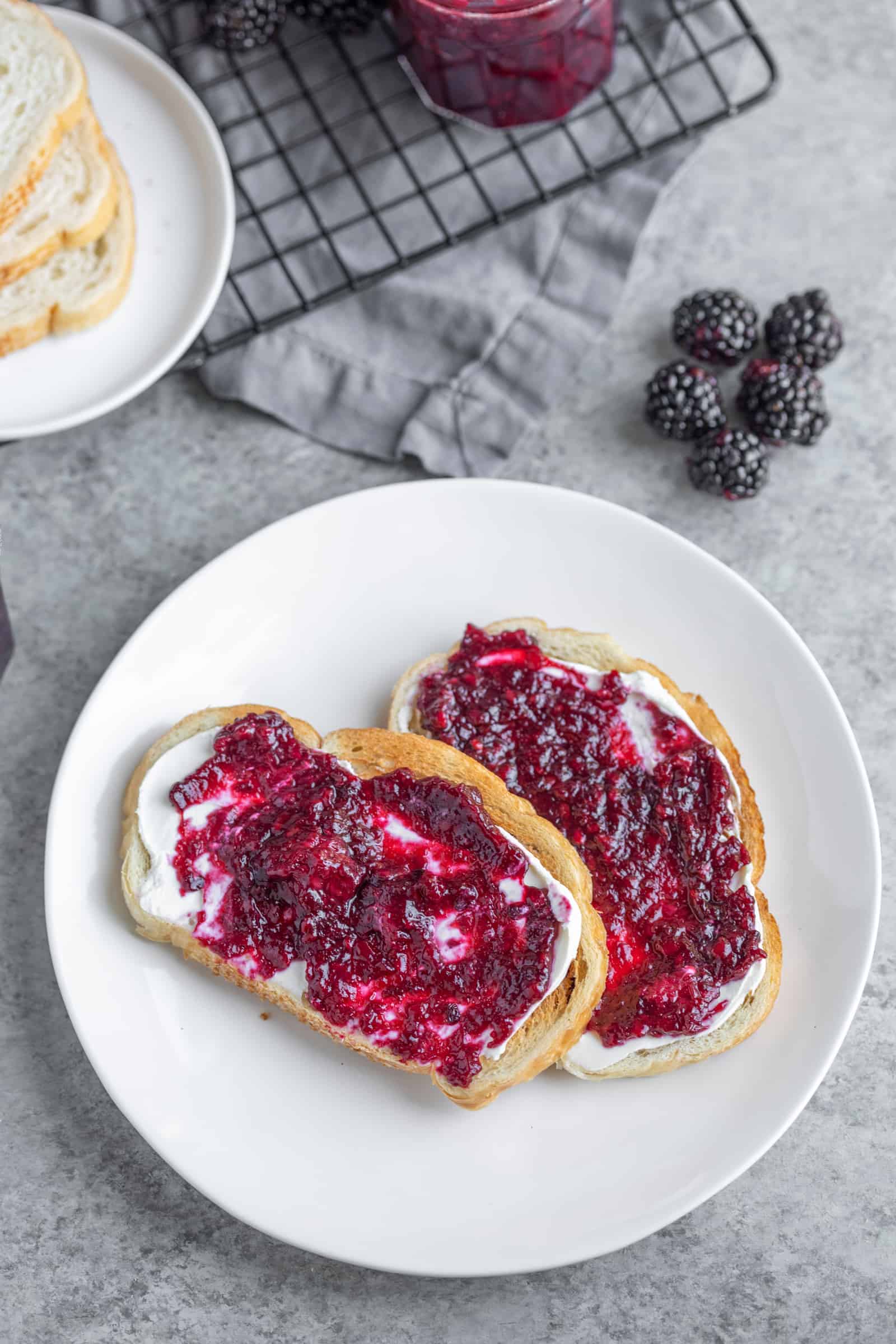
Homemade Blackberry Jam (Low Sugar)

Have extra blackberries? Make this low-sugar blackberry jam recipe to enjoy the fresh taste of blackberries all year with a fraction of the sugar in traditional jam recipes and no artificial sweeteners.
Ingredients
- 8 cups fresh blackberries
- 1/2 cup water
- 1 tablespoon fresh lemon juice
- 5 tablespoons Low or No-Sugar Needed Pectin
- 1 1/2 cups granulated sugar
- 7 half-pint mason jars
Instructions
- If you are canning your jam, then sanitize and prepare the jars. Boil them in a water bath for ten minutes, then remove. Not only does this help sanitize the jars, it also warms the jars before you put the hot jam in.
- Wash blackberries. Crush the blackberries a cup at a time either by using a food mill or hand potato-masher. If you want jelly, then blend the blackberries in a blender and strain the juice, discarding any seeds. Note that you will get less than 7 jars if you do this.
- Place blackberries, water, and lemon juice in a large stock pot. Stir in pectin and heat the mixture over high heat until it comes to a rolling boil that cannot be stirred down. Keep stirring the mixture to prevent the bottom from burning.
- Add in the sugar and return to a rolling boil. Continue boiling for a minute, while stirring then remove from heat.
- If you don’t plan on canning the jam then let cool for a few minutes before pouring into containers. Cool completely, then place in the fridge to harden. You can store jam that hasn’t been canned in the fridge for ~5-6 days.
- If you are canning the jam, place a funnel in jar, then ladle the hot jam into the warm jars, leaving a 1/4″ head space. If any jam got onto the lid space, clean off then top with lids and rings.
- Place sealed jars into a boiling water bath and boil, fully submerged, for 10 minutes. Carefully remove jars (I use tongs or my canning tongs) and place on a cooling rack to cool. Once cooled, the lids should seal. You can check this by pressing down on the center of the lid- if it is able to be pushed down, then it hasn’t sealed correctly. The one’s that haven’t sealed (if you have any) can either be reprocessed in a water bath or just placed in the fridge to eat immediately.
Notes
For a sweeter jam, you can substitute white grape juice or apple juice for the water
Nutrition
Serving: 1jarCalories: 236kcalCarbohydrates: 59gProtein: 2gFat: 1gSaturated Fat: 0.02gPolyunsaturated Fat: 0.5gMonounsaturated Fat: 0.1gSodium: 3mgPotassium: 270mgFiber: 9gSugar: 51gVitamin A: 352IUVitamin C: 35mgCalcium: 49mgIron: 1mg